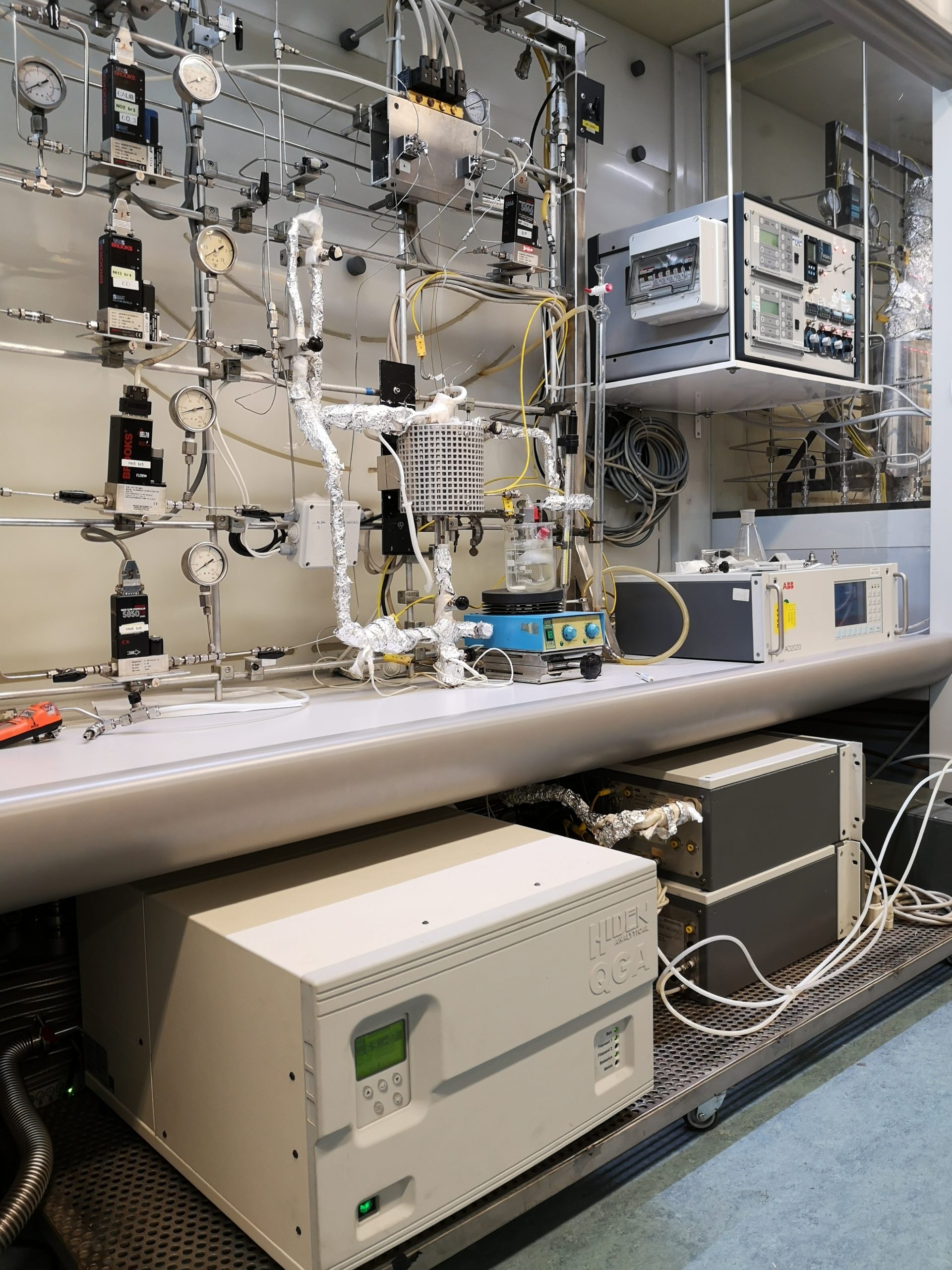Passive NOx Adsorbers (PNA) are a novel technology designed to reduce NOx emissions during the Diesel engine cold start period by adsorbing them at low temperature and thermally desorbing them once the downstream SCR catalyst becomes active. Despite the growing industrial interest in this technology, the mechanisms behind the NOx adsorption and the effects of the operative conditions still need to be fully elucidated. With this aim, transient response methods were applied to study a well characterized 1% Pd-CHA material for PNA applications. In particular we have investigated the NO adsorption/desorption features of the system, carrying out NO adsorption + TPD tests under different operating conditions and analysing the related mechanistic implications. Specifically, both the NO uptake and the apparent thermal stability of the stored NOx species were studied at different adsorption temperatures, addressing also the role of the main exhaust components (O2, H2O, CO). The experiments have been realized in an experimental rig where a powder catalyst sample was loaded in the test reactor and diluted with cordierite. The reactants were fed to the reactor by pulse valves to simulate step changes in the feed mixture composition. Temporal evolution of the species at the reactor outlet was followed with a mass spectrometer (QGA Hiden Analytical) and a UV analyzer (ABB LIMAS 11 HW) + IR analyzer (ABB Uras 14) arranged in a parallel configuration. The Mass Spectrometer monitored all the species involved in the NOx control processes, such as NH3, H2O, N2, NO, O2, Ar, N2O, NO2, CO and CO2. Instead, the UV analyzer provided an accurate continuous measurement of ammonia, NO, NO2 while the dedicated IR analyzer detected CO and CO2.

The Hiden QGA in the Laboratory
Our results reveal for the first time the crucial role of the Pd redox state in determining the performance of Pd-CHA as a PNA system. We found invariably that NO storage was favoured by reducing conditions, whereas NO release was promoted by an oxidising environment. Accordingly, all our observations are reconciled by identifying the reduced PdI cations as the primary NO storage site. In fact, when Pd oxidation was limited (e.g., due to low temperature or to the presence of CO/H2O), the Pd utilization was the highest, the NOstored/Pdtot molar ratio approaching unity: all the Pd sites were reduced, and for each reduced Pd ion, one NO molecule was stored. The Pd utilization, on the contrary, was adversely affected by a high oxidizing potential of the gaseous mixture: in the case of a dry O2 containing feed mixture, high adsorption temperatures had a detrimental effect on the NO storage efficiency, that was even more evident in the absence of CO or H2O. The reason can be ascribed to the Pd re-oxidation by oxygen, which is enhanced by high temperatures and is instead inhibited by CO, a stronger reductant, and by H2O, which kinetically impedes the Pd oxidation pathway thus keeping more Pd sites in a reduced state. Remarkably, the same competition between the NO storage on reduced PdI sites and the oxidation of such PdI sites explains also the impact of the gas mixture composition on the desorption of NO: in our TPD experiments, in fact, the stronger was the oxidizing potential of the gas mixture during the TPD, the lower was the apparent stability of the NO-related adsorbed species. The redox state of the Pd sites emerges, therefore, as a key parameter for the operation of Pd-CHA based PNA systems, critically controlling their performances in both phases of their operational cycle.
Paper Reference: Roberta Villamaina, Umberto Iacobone, Isabella Nova, Enrico Tronconi, Maria Pia Ruggeri, Loredana Mantarosie, Jillian Collier, David Thompsett “Mechanistic insight in NO trapping on Pd/Chabazite systems for the low-temperature NOx removal from Diesel exhausts” Applied Catalysis B: Environmental 2021, 284, 119724 https://doi.org/10.1016/j.apcatb.2020.119724
Download Project Summary: AP-QGA-202107
Project summary by: Enrico Tronconi, Laboratory of Catalysis and Catalytic Processes, Dipartimento di Energia, Politecnico di Milano, 20156, Milan, Italy
To find out more about this product visit the QGA product page or if you would like to contact us directly please Send us a Message.

